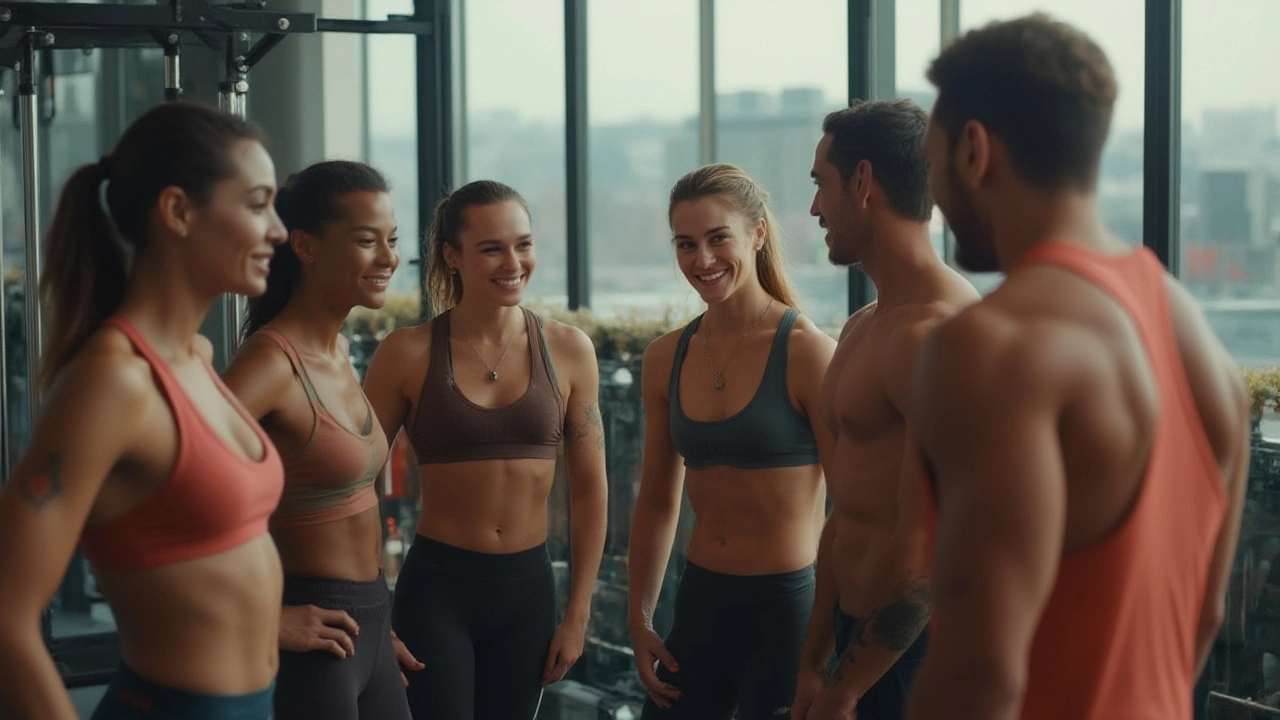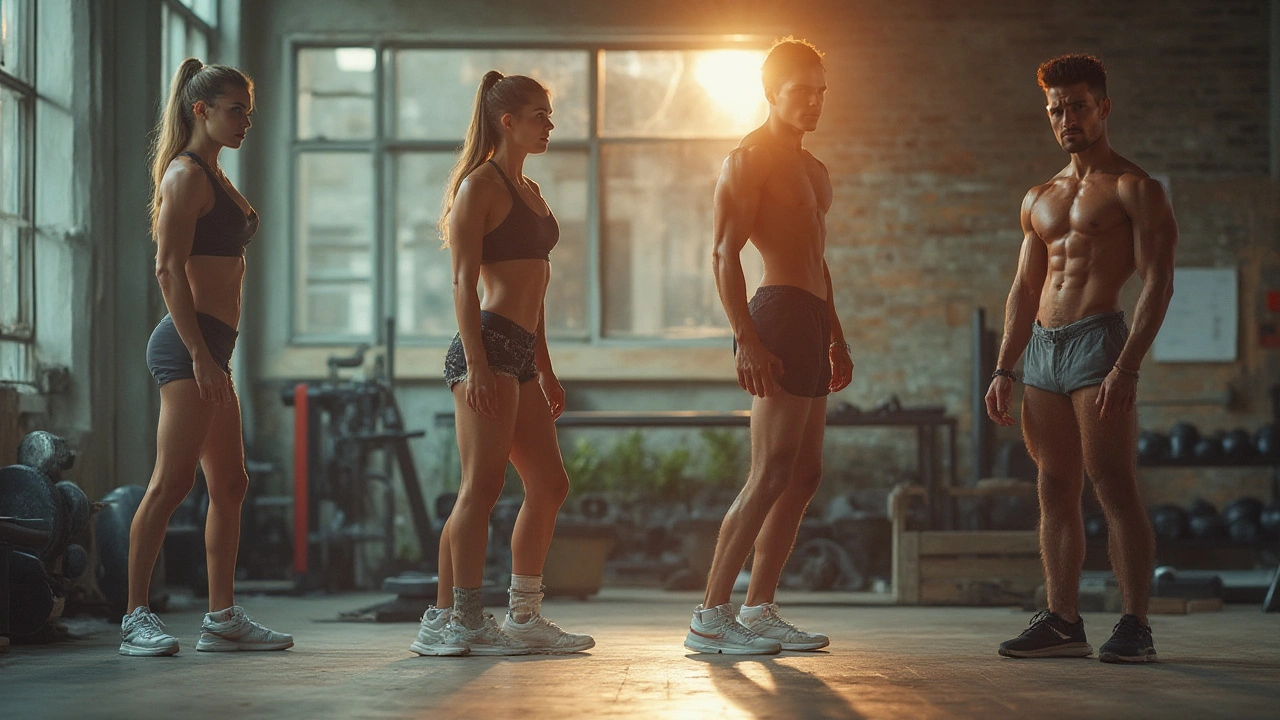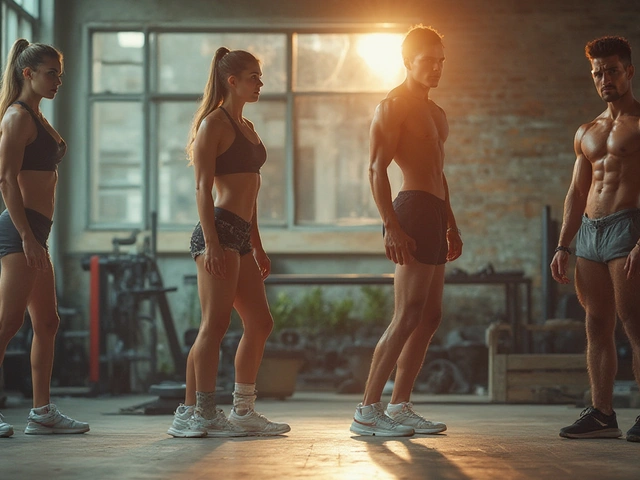Ever catch yourself scrolling through Instagram, mesmerized by those jaw-dropping before-and-after shots of fitness models? It’s hard not to wonder: How do those transformations happen? Genetics? Luck? Or just superhuman willpower and a box of broccoli? Turns out, it’s a wild mix of honest struggles, relentless habit-building, self-doubt, a pinch of stubbornness, and a chunk of science-backed strategy. Sometimes, the glow up takes years. Sometimes, it’s the result of burning out, hitting rock bottom, and clawing a way back up. Let’s peel back the curtain on the transformations of top fitness models—their real stories, the hard lessons, and the surprising secrets that never make it into the highlight reels.
How Do Fitness Models Get Their Start?
No one’s born with a chiseled six pack or perfect glutes—not even the most iconic fitness pros, no matter what their baby pictures might claim. Almost all top fitness models started miles away from magazine covers. Andrea Albright, for example, was once overweight and bullied before she rocked a cover shoot for Oxygen Magazine. Ulisses Jr.—now famous for his physique—grew up in NYC, struggled with asthma, and found weightlifting as a teen. Paige Hathaway barely set foot in a gym in her teens. Same goes for Simeon Panda, who used to work an office job and just lifted for fun on the side. You get the picture: the early days look a lot more normal than you’d expect.
Starting out, most aspiring fitness models train at local gyms, with cheap gym memberships and second-hand workout gear. Nobody talks about the awkward phase, though: sweaty T-shirts, failed diets, and the slow realization that scrolling fitness pages doesn’t induce a transformation. A regular day could look like sprinting up the stairs after missing your alarm or eating microwave oatmeal before a shift. There’s frustration, plateaus, and even public embarrassment—pulling a muscle or doubling over from squats in crowded gyms isn’t as rare as you’d think.
That’s not to say every journey looks the same. Top Vietnamese fitness influencer Hana Giang Anh grew up in a sports-loving family—but even she faced criticism for her muscular build in her early modeling days. The path is rarely linear. Some models discover their “why” after fighting off health scares. Others want to prove people wrong or simply escape a draining 9-to-5 job. The most common turning point? Hitting that one moment where your reflection or a not-so-subtle comment sparks something inside—a decision that tomorrow can be different from yesterday.
Pro Tip: If you’re eyeing a transformation, don’t skip taking that first awkward gym selfie. You’ll thank yourself later when comparing day-one with your someday.
The Training: What It Really Takes to Transform
Here’s a fact: every transformative fitness journey is built on comfort zone demolition. Training for a fitness model body goes way past casual jogs and YouTube workouts. It’s methodical, progressive, and often brutal. You’ll catch pros talking about “progressive overload” or “hypertrophy” but what does that even mean for real life? Simply put: every week, you aim to lift a little heavier, or squeeze out a few more reps. Every month, you tweak the plan and chase fresh challenges.
Let’s talk numbers. According to a survey from Men’s Health, most professional fitness models train between 5 to 6 days a week, splitting up their routines to target specific muscle groups. Monday: legs and glutes. Tuesday: upper body. Wednesday: core and HIIT. This isn’t just about looking buff. The structure helps each muscle get enough time to repair and grow. That’s where the magic of transformation happens—during rest, not just sweat sessions.
Cardio? Absolutely. But not endless hours on a treadmill. Top models lean into HIIT—short bursts of all-out effort that torch calories and get the metabolism fired up. Take a look at the average calories burned:
| Exercise | Calories Burned/Hour* |
|---|---|
| HIIT Circuit | ~600 |
| Weightlifting (Intense) | ~450 |
| Running (7 mph) | ~700 |
*Based on a 160-lb person
The consistency factor is no joke. According to fitness icon Ulisses Jr., “Motivation gets you started. Consistency gets you results.” Showing up when you don’t want to, sticking to the plan when it feels pointless—those are the real milestones to transformation.
Some tip their transformation scale by hiring coaches, investing in personal trainers, or joining boot camps. Others carve their path solo with apps and YouTube guides, tracking every rep and calorie. Both work—as long as you show up, track progress, and challenge yourself. Your body is stubborn by nature. It takes persistence and adaptability to force change.
Quick practical advice? Don’t chase ‘perfect’ right away—just do a little better each week. That adds up faster than you’d ever expect.

Nutrition: Truths, Myths, and the Hard Stuff
Is there any part of fitness transformation surrounded by more myths than diet? Top fitness models know that abs might be sculpted in the gym, but they’re actually revealed in the kitchen. And no, it isn’t just a thousand protein shakes and boiled chicken. The real nutrition shifts take place in how you think about food.
Most fitness models follow a simple rule: eat for fuel, not just flavor. That means building meals around high-protein sources like chicken, salmon, tofu, legumes, and eggs. Healthy carbs—sweet potatoes, oats, brown rice—serve as energy for those grueling workouts. Fats? They don’t shy away from avocados, nuts, olive oil, and yes, the occasional slice of pizza when the craving hits.
Bank-quality discipline comes into play during prep for shoots or competitions. Trainers recommend cutting down processed foods, refined sugars, and sodium. Ever heard about the ‘peak week’ trick? Top models sometimes manipulate water intake and carb load to look extra lean and camera-ready. Not a sustainable practice, but it’s how some achieve that razor-sharp look under magazine lights.
But here’s the less glamorous side: food cravings, social FOMO, and mealtime monotony make it tough. The process can mess with your head—studies have shown up to 35% of fitness competitors experience some form of disordered eating during intense prep periods. The real winners are the ones who learn to build a sustainable, delicious menu they actually enjoy repeating.
- Prepping meals in advance saves time and keeps nutrition on track.
- Tracking progress with nutrition apps (like MyFitnessPal) reveals sneaky calories.
- Hydration matters more than supplements—2.5 to 3 liters of water a day is standard.
Legendary model Jamie Eason once said,
“The mistake is thinking your diet has to be perfect to make progress. Treat your nutrition like a roadmap, not a prison sentence.”
If you’re considering a change, remember: you don’t have to eat bland chicken and broccoli forever. Start swapping junk with real food that powers you through workouts—and keeps you sane.
What Sets Top Fitness Models Apart?
Ever notice how some fitness influencers burst onto the scene, but only a handful stay, grow, and keep trending year after year? It’s not just physical transformation, though those ‘before and after’ reels are addictive. What sets these top-tier models apart? Mindset, creativity, hustle, and a savvy sense of personal branding.
Personality matters as much as biceps. Take Michelle Lewin, with over 15 million Instagram followers—not because of her measurements, but her authentic sharing and behind-the-scenes struggles. Content consistency is key, too. Top fitness models treat their social feeds like a job: regular training posts, workout tips, wellness Q&As, and honest shots of off-days. They share what’s working, what flops, and how they course-correct. Transparency draws people in, and it sticks.
There’s also a wild amount of networking and brand building. Many mainstream fitness models collaborate with athleticwear brands, launch meal prep apps, or host webinars. Simeon Panda started as a modest lifter in London, but now runs a successful supplement company and online fitness app. They find their niche (muscle-building for women, vegan fitness, home workouts for busy parents) and deliver valuable, relatable content week in and week out.
What about physical transformation stats? Here’s a look at some real ‘before and after’ journey markers seen in top models:
| Model | Start Weight (kg) | Current Weight (kg) | Transformation Time |
|---|---|---|---|
| Andrea Albright | 92 | 61 | 2 years |
| Ulisses Jr. | 64 | 88 | 6 years |
| Michelle Lewin | 59 | 61 | 4 years (muscle gain) |
The real magic? Fitness modeling is rarely about perfection. It’s about persistence, and the guts to show both wins and slip-ups. Inspire, don’t intimidate—that’s how fitness models become lasting icons.

How to Channel That ‘Zero to Hero’ Energy for Yourself
Not every one of us wants to be a cover model, but everyone can steal a page from their transformation stories. The common thread? You don’t need fancy equipment or private chefs. You need the guts to start imperfectly, and not quit on the crappy days. Start tracking something: steps, water intake, reps—whatever makes you feel in control. Most top models swear by journaling to record not just PRs or weight, but mindset notes: What triggered a good session? What sabotaged a planned meal?
Surround yourself with inspiration. Top fitness models hang out with other fit-minded people—whether in real life or in online communities. There are now thousands of free fitness groups on platforms like Reddit and Facebook, each sharing workouts, meal ideas, and honest vent sessions about tough weeks.
Pick a simple program. The Bodybuilding.com “All Access” portal, Kayla Itsines’ “Sweat” app, or Chloe Ting’s free YouTube challenges—all deliver structured blueprints for every fitness level. Don’t overthink the perfect plan. What matters is momentum.
And don’t obsess over the scale. Focus on progress—photos, energy, endurance, mood. Remember, fitness models post the glamorous after, but behind every “10-week transformation,” there are about 300 unposted mornings staring at sleepy bathroom mirrors.
- Start with 3 short workouts a week, then ramp up as you build confidence.
- Share your progress—publicly or privately—for accountability.
- Celebrate milestones beyond weight loss (first pull-up, full push-ups, better sleep).
- Forgive yourself after setbacks, then jump back in the saddle.
Anyone can begin a transformation—zero glam, no filter required. The stories are everywhere, but the best one might just start when you decide today’s the day to change something.





